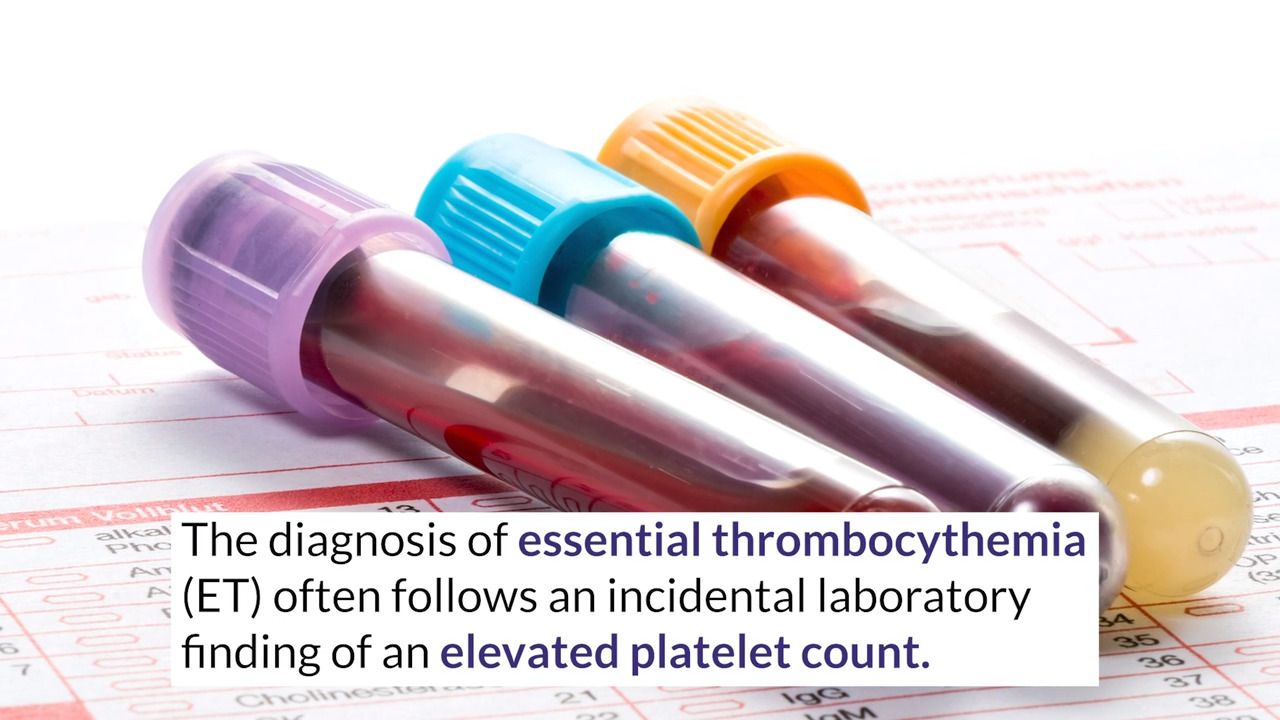Harold J. Burstein, MD, PhD, on Results of the CREATE-X Clinical Trial on Higher-Risk Disease
Harold J. Burstein, MD, PhD, of the Dana-Farber Cancer Institute, discusses the CREATE-X adjuvant study of capecitabine in high-risk patients with residual disease (Abstract S6-01).
Sarat Chandarlapaty, MD, PhD, on BOLERO-2 Clinical Trial Results
Sarat Chandarlapaty, MD, PhD, of the Memorial Sloan Kettering Cancer Center, discusses results from this study that showed patients with ER-positive metastatic breast cancer who had a D538G and/or a Y537S mutation in the ESR1 gene had significantly worse median overall survival (Abstract S2-07).
Michael Gnant, MD, on Hormone Receptor–Positive Breast Cancer: Results From the ABCSG-18 Trial
Michael Gnant, MD, of the Medical University of Vienna, discusses a study in which denosumab was added to adjuvant aromatase inhibitor therapy to improve disease-free survival in postmenopausal patients with early-stage, hormone receptor–positive breast cancer (Abstract S2-02).
Sherene Loi, MD, on Triple-Negative Breast Cancer: A Pooled Data Analysis
Sherene Loi, MD, of Peter MacCallum Cancer Centre, discusses a pooled individual patient data analysis of stromal tumor-infiltrating lymphocytes in primary triple-negative breast cancer treated with anthracycline-based chemotherapy (Abstract S1-03).
Benjamin D. Smith, MD, on Mastectomy vs Lumpectomy: Complications and Costs
Benjamin D. Smith, MD, of the MD Anderson Cancer Center, discusses the higher complication rates and economic burdens of mastectomy plus reconstruction vs lumpectomy plus radiation in early breast cancer (Abstract S3-07).
Periodontal Disease Linked to Increased Risk of Breast Cancer in Postmenopausal Women, Especially Smokers
A large prospective study of postmenopausal women investigating an association between periodontal disease and breast cancer risk has found that among all women in the study, the risk of breast cancer was 14% higher in women who had periodontal disease. Among women who had quit smoking within the...
Follow-up Times for Colorectal Cancer Screening Abnormalities Lag Behind Others
Follow-up times of abnormal screening exams were shorter for breast cancer than they were for colorectal and cervical cancers, according to a recent study involving more than 1 million individuals who underwent these screenings. Recently published by Tosteson et al in the Journal of General...
Potential Overdiagnosis of Contralateral Breast Cancer With Preoperative Magnetic Resonance Imaging in Older Women With Breast Cancer
In an analysis of the Surveillance, Epidemiology, and End Results (SEER)–Medicare database reported in the Journal of Clinical Oncology, Wang et al found that use of preoperative magnetic resonance imaging (MRI) was associated with overdiagnosis of contralateral breast cancer among older...
Higher BMI Associated With Increased Risk of Breast Cancer–Related Lymphedema
Each year, about 1.38 million women worldwide are diagnosed with breast cancer. Advances in treatment have facilitated a 90% 5-year survival rate among those treated. Given the increased rate and length of survival following breast cancer, more and more survivors are facing a lifetime risk of...
FDA Allows Marketing of Cooling Cap to Reduce Hair Loss During Chemotherapy
The U.S. Food and Drug Administration has cleared the first cooling cap to reduce hair loss in female breast cancer patients undergoing chemotherapy for marketing in the United States. Hair loss is a common side effect of certain types of chemotherapy, commonly associated with the treatment of...
Carpal Tunnel Syndrome in Patients Treated With Anastrozole in IBIS-II
As reported by Spagnolo et al in the Journal of Clinical Oncology, women receiving anastrozole in the International Breast Cancer Intervention Study II (IBIS-II) had a higher incidence of carpal tunnel syndrome compared with those receiving placebo. A higher incidence of carpal tunnel syndrome...
Homologous Recombination Deficiency Diagnostic Test Helps Identify Patients With Breast Cancer Likely to Respond to Platinum-Based Therapy
Two studies evaluating the ability of myChoice HRD, a homologous recombination deficiency (HRD) test, to identify patients with breast cancer who are likely to respond to platinum-containing therapies have found that the test is effective in optimizing therapy selection for patients. The diagnostic ...
SABCS 2015: Phase III BELLE-2 Trial Meets Primary Endpoint of Progression-Free Survival
Among women with locally advanced or metastatic hormone receptor–positive breast cancer that was resistant to hormone therapy, those who had mutated PIK3CA detected in their blood benefited from a combination of the investigational PI3K inhibitor buparlisib and fulvestrant (Faslodex),...
SABCS 2015: Resistance of Estrogen Receptor–Positive Breast Cancer to Tamoxifen Therapy May Be Driven by APOBEC3B
Responses to tamoxifen were significantly prolonged by reducing levels of the enzyme APOBEC3B in preclinical models of estrogen receptor–positive breast cancer and significantly shortened by increasing levels of APOBEC3B, suggesting that APOBEC3B drives resistance to tamoxifen, according to...
SABCS 2015: Ado-Trastuzumab Emtansine Improved Overall Survival for Heavily Pretreated Patients With HER2-Positive Breast Cancer
Among patients with HER2-positive, metastatic breast cancer that had progressed despite treatment with two or more forms of HER2-targeted therapy (trastuzumab [Herceptin] and lapatinib [Tykerb]), median overall survival was increased for those treated with ado-trastuzumab emtansine (aka T-DM1...
SABCS 2015: No Significant Difference in Recurrence Rates Among Women With Ductal Carcinoma in Situ Taking Anastrozole or Tamoxifen
Postmenopausal women with ductal carcinoma in situ (DCIS) had similar outcomes with disease recurrence whether they took tamoxifen or the aromatase inhibitor anastrozole for 5 years after surgery, but women in the two groups had different side effects, according to results from the phase III...
Study Finds No Improvement in Diagnostic Accuracy of Digital Screening Mammography With Computer-Aided Detection
In a study reported in JAMA Internal Medicine, Lehman et al found no difference in the diagnostic accuracy of digital screening mammography with vs without computer-aided detection. Study Details The study assessed the accuracy of digital screening mammography interpreted with (n = 495,818) vs...
SABCS 2015: Patients With Ductal Carcinoma in Situ Receiving Anastrozole Reported Symptoms Different From Those in Patients Receiving Tamoxifen
Analysis of patient-reported outcomes, a secondary endpoint of the phase III NSABP B-35 clinical trial, in which anastrozole and tamoxifen were compared in postmenopausal women with ductal carcinoma in situ (DCIS) who underwent lumpectomy plus radiotherapy, found that there were no differences in...
SABCS 2015: Pathologic Complete Response to Presurgery Chemotherapy Improves Survival for Patients With Triple-Negative Breast Cancer
Patients with stage II or stage III triple-negative breast cancer who had a pathologic complete response (pCR) after presurgery chemotherapy had increased event-free and overall survival compared with those who had more than minimal residual invasive disease at surgery following presurgery...
SABCS 2015: Breast-Conserving Therapy Provided Better Long-Term Outcome Than Mastectomy in Patients With Early-Stage Breast Cancer
Among women with early-stage breast cancer, those who received breast-conserving surgery plus radiation had improved overall survival after 10 years compared with patients who received a mastectomy—76.8% vs 59.7%, respectively—according to a Dutch study by van Maaren et al. After...
SABCS 2015: ESR1 Gene Mutations Are Associated With Worse Overall Survival in Metastatic ER-Positive Breast Cancer
A study by Chandarlapaty et al investigating whether mutations in the estrogen receptor are common in patients with advanced breast cancer and how they affect patient outcomes has found that the D538G and Y537S mutations in the estrogen receptor 1 (ESR1) gene are prevalent in patients with advanced ...
SABCS 2015: Mastectomy Plus Reconstruction Has Higher Complication Rates and Costs Than Lumpectomy Plus Radiation
Among the various guideline-concordant local therapy options available for women with early-stage breast cancer in the United States, mastectomy plus reconstruction had the highest complication rates and complication-related costs for both younger women with private insurance and older women on...
SABCS 2015: Women With Luminal A Breast Cancer Did Not Benefit From Adjuvant Chemotherapy in Phase III Trial
Premenopausal women whose invasive breast cancers were of the luminal A subtype had comparable 10-year disease-free survival rates, regardless of whether or not they received adjuvant chemotherapy, according to data from the phase III Dutch Breast Cancer Cooperative Group (DBCG77B) clinical trial...
SABCS 2015: Capecitabine Improved Outcomes for Breast Cancer Patients With Residual Disease After Presurgery Chemotherapy
Treatment with the chemotherapy agent capecitabine increased disease-free survival for women with HER2-negative breast cancer that was not eliminated by presurgery chemotherapy, according to results from the phase III CREATE-X clinical trial presented at the 2015 San Antonio Breast Cancer...
SABCS 2015: Denosumab Improves Disease-Free Survival for Postmenopausal Patients With Hormone Receptor–Positive Breast Cancer
Adding denosumab (Xgeva) to adjuvant aromatase inhibitor therapy improved disease-free survival for postmenopausal patients with early-stage, hormone receptor–positive breast cancer, according to results from the phase III ABCSG-18 clinical trial presented at the 2015 San Antonio Breast...
Better Invasive Disease–Free Survival With Epirubicin/Cyclophosphamide and Docetaxel vs Epirubicin/Docetaxel and Capecitabine in Breast Cancer
In a Spanish phase III trial (GEICAM/2003-10) reported in the Journal of Clinical Oncology, Martín et al found that invasive disease–free survival was improved with adjuvant epirubicin/cyclophosphamide (EC) followed by docetaxel (EC-T) vs epirubicin/docetaxel followed by capecitabine...
Systematic Review Informing ACS Updated Guideline for Breast Cancer Screening in Women at Average Risk
Findings of a systematic review of the benefits and harms of breast cancer screening commissioned by the American Cancer Society (ACS) to inform its updated guideline on screening in average-risk women were reported in JAMA by Myers et al of the Duke Evidence Synthesis Group. Their findings were...
Chemotherapy-Induced Peripheral Neuropathy May Be Associated With Cerebral Perfusion and Gray Matter Changes
In a study reported in the Journal of Clinical Oncology, Nudelman et al found that increased chemotherapy-induced peripheral neuropathy symptoms at 1 month after completing treatment for breast cancer was associated with increased cerebral perfusion and increased gray matter density at 1 month....
Study Finds Increased Risk of Breast Cancer After False-Positive Screening Mammography
Studies show that an estimated 67% of women aged 40 and older undergo screening mammography every 1 to 2 years. Over the course of 10 screening mammograms, the estimated cumulative probability of at least one false-positive result is 61% for women screened annually and 42% for women screened...
RSNA 2015: Study Suggests Breast Density Alone Not a Risk Factor for Cancer
Breast density may not be a strong independent factor for breast cancer risk, according to a new study presented (BR267-SD-THA1) by Katavic et al December 2, 2015, at the Annual Meeting of the Radiological Society of North America (RSNA) in Chicago. Prior research has shown an association between...
RSNA 2015: Medicaid Expansion Improves Breast Cancer Screening for Low-Income Women
Low-income women in Medicaid expansion states in the United States are more likely to have a breast screening performed than those in nonexpansion states, according to a study (HP207-SD-MOA2) by Fazeli Dehkordy et al presented November 30, 2015, at the Annual Meeting of the Radiological Society of...
Female Hormone Supplements With Estrogen and Progestin Linked to Breast Cancer Risk in African American Women
Postmenopausal African American women who use female hormone supplements containing estrogen and progestin (“combination” therapy) are at an increased risk for estrogen receptor–positive breast cancer. The study, published by Rosenberg et al in the Journal of the National Cancer...
Breast MRI After Mammography May Identify Additional Aggressive Cancers
Additional breast cancers found with magnetic resonance imaging (MRI) are sometimes larger and potentially more aggressive than those found on mammography, according to a study published by Iacconi et al in Radiology. Researchers said that in some cases, MRI findings of additional cancers not seen...
Researchers Develop Mathematical Model to Forecast Metastatic Breast Cancer Survival Rates
University of Southern California (USC) researchers have developed a mathematical model to forecast metastatic breast cancer survival rates using techniques usually reserved for weather prediction, financial forecasting, and surfing the Web. For decades, medical schools have taught doctors that...
Elevated C-Reactive Protein May Be Associated With Increased Breast Cancer Risk in Postmenopausal Women Not Using Hormone Therapy
In a study reported in the Journal of the National Cancer Institute, Gunter and colleagues found that increased levels of the inflammatory marker C-reactive protein (CRP) were associated with increased risk of breast cancer in postmenopausal women not using hormone therapy. No associations of...
Predicted Burden of Breast Cancer in the United States
In a study reported in Journal of the National Cancer Institute, Rosenberg et al predicted that the number of new invasive plus in situ breast cancers will increase from approximately 283,000 in 2011 to 441,000 in 2030. Modeling suggests that the proportion of estrogen receptor–negative cases ...
Less Favorable Characteristics for Breast Cancer Diagnosed After Biennial vs Annual Screening in Premenopausal Women
In a study reported in JAMA Oncology, Miglioretti et al found that diagnosis of breast cancer after biennial vs annual mammography screening was associated with a higher risk of less favorable tumor prognostic characteristics among premenopausal women. They also noted a nonsignificantly higher risk ...
Patients With Breast Cancer Who Have Prescription Drug Benefits, Higher Incomes More Likely to Start and Continue Hormonal Therapy
A University of Colorado Cancer Center study published by Bradley et al in Breast Cancer Research and Treatment showed that patients with breast cancer whose health insurance plans included prescription drug benefits were 10% more likely to start important hormonal therapy than patients who did not ...
Blood Test Detects Resistance to Aromatase Inhibitors in Breast Cancer Treatment
Scientists have developed a highly sensitive blood test that can spot when breast cancers become resistant to standard hormone treatment, and have demonstrated that this test could guide further treatment. The test gives an early warning of resistance to aromatase inhibitors, which are used to...
Some Rare HER2 Mutations May Not Be Capable of Causing Breast Cancer Growth
Results of a new laboratory study by Johns Hopkins Kimmel Cancer Center researchers suggest that some rare “missense” mutations in the HER2 gene are apparently not—on their own—capable of causing breast cancer growth or spread. In a related finding, the research team said...
Shift Over Time in Treatment Patterns of Ductal Carcinoma in Situ
An evaluation of national treatment trends for ductal carcinoma in situ from 1991 to 2010 and their impact on survival revealed “a substantial shift in locoregional treatment patterns for ductal carcinoma in situ,” Mathias Worni, MD, of Duke University Medical Center, Durham North...
New Prediction Model May Provide More Accurate Assessment of Breast Cancer Risk in Hispanic Women
A prediction model created for projecting absolute invasive breast cancer risk in Hispanic women provides a more accurate assessment of their risk of developing breast cancer compared with existing models that are based on data from non-Hispanic women, according to a new study by Banegas et al....
ABC3: Experts Create New Consensus Guidelines for Advanced Breast Cancer Treatment
Although advanced breast cancer is incurable, there are some patients who have just a few small metastases who would respond well to systemic treatments such as chemotherapy and hormone therapy. In new guidelines agreed on by participants at the Advanced Breast Cancer Third International Consensus...
Most Women Undergoing BRCA Genetic Testing Do Not Receive Pretest Genetic Counseling
In the ABOUT study reported in JAMA Oncology, Armstrong et al found that the majority of BRCA-tested women in a commercially insured population responding to a questionnaire about their experience had not received genetic counseling from a genetics clinician prior to testing. The study was...
Increasing Use of Preoperative Breast MRI Linked to Increased Postdiagnostic Imaging and Biopsy, Mastectomy, and Surgery Delay
In a Canadian population-based study reported in JAMA Oncology, Arnaout et al found that breast magnetic resonance imaging (MRI) is increasingly used in preoperative evaluation of women with breast cancer and that its use is associated with increased likelihood of confirmatory breast imaging,...
ABC3: Higher Insulin Is an Independent Prognostic Factor in Advanced Breast Cancer
Patients with metastatic breast cancer who have higher insulin levels than normal, but are not diabetic, have a significantly worse prognosis compared with those who have normal insulin levels, according to data being presented (Abstract BP129) at the Advanced Breast Cancer Third International...
ABC3: Patients Speak Out Against 'Damaging Messages' About Metastatic Breast Cancer, Call for Inclusion in Discussion About Treatment Costs
Organizations that issue “damaging messages” about advanced breast cancer need to be identified and educated to change the way they talk about the disease, a patient told the Advanced Breast Cancer Third International Consensus Conference in Lisbon, Portugal, on November 5, 2015. In...
Breast Cancer Adjuvant Therapy Benefit Can Wax and Wane Over Time
After breast cancer surgery, women are prescribed adjuvant therapies such as chemotherapy and endocrine drugs to reduce the risk of the cancer returning. It has been assumed that the treatment effects of these therapies remain constant over time, but a new study from the Cancer Therapy &...
Antiangiogenic Breast Cancer Treatment May Benefit Only Patients With Well-Perfused Tumors
A Massachusetts General Hospital (MGH) research team, in collaboration with investigators at the Dana-Farber Cancer Institute, may have found a reason why the use of antiangiogenic drugs—which has improved outcomes for patients with several types of cancer—fails to benefit some breast...
No Significant Survival Improvement With Etirinotecan Pegol vs Physician’s Choice in Heavily Pretreated Advanced Breast Cancer
In the phase III BEACON trial reported in The Lancet Oncology, Perez et al found that etirinotecan pegol was not associated with a significant increase in overall survival compared with physician’s choice of treatment in women with locally recurrent or metastatic breast cancer previously...





